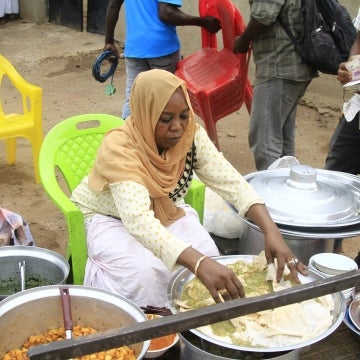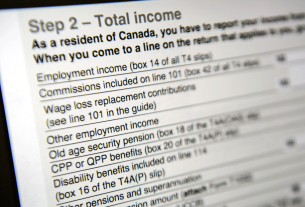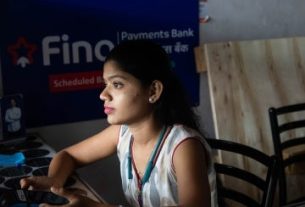Gender gaps in access to financial services are narrowing— according to the World Bank’s newly published Findex 2025 dataset, the share of women with accounts has climbed to 77%, just four percentage points behind men, globally. In low- and middle-income countries (LMICs), the gender gap stands at five percentage points (78% of men vs. 73% of women), down from six percentage points in 2021.
This is real progress, but as advocates of women’s financial inclusion (WFI) know, the story is more nuanced. A closer look reveals two clear priorities. First, where account access gaps remain large or persistent, we need new, targeted strategies for women that go beyond the existing playbook. And second, we need to take the next step of increasing the usefulness and sustained use of accounts by women. This will require going beyond product design and ensuring financial services enable tangible economic gains such as earning income, building resilience, or investing in livelihoods so that usage translates into real value for women.
Reinventing the access playbook
Despite progress, gender gaps in financial account ownership persist in 65 LMICs, with women 13 percentage points less likely than men to have accounts. These gaps exist in countries that have low overall levels of account access, like Algeria and Pakistan, and also countries with higher levels of access, like Nigeria and Turkey. Some 20 countries show gaps of over 20 percentage points.
Regional patterns vary, which provides clues on how to reinvent the access playbook. In Sub-Saharan Africa, the 12-percentage-point gap is concentrated in low-income countries like Mali and Togo, while Ghana and Senegal have halved theirs since 2021 thanks to mobile money, which has proven a strong equalizer. In Kenya, women now hold mobile money accounts at parity with men.
High gender gaps in the Middle East and North Africa (15 percentage points) and parts of South Asia, such as Pakistan (30 percentage points) and Bangladesh (20 percentage points), are accompanied by low rates of female labor force participation (FLFP). For instance, in MENA, just 18% of women work, compared to over 70% of men. Within South Asia, India is an exception – public policies have linked national ID and account ownership, and have erased any gender gap in account access, even though it retains a low FLFP rate of 42%.
Account ownership is only part of the story – mobile phone gaps remain a major barrier to financial inclusion. Phones are now essential for accessing digital financial services, yet women in LMICs are 9 percentage points less likely than men to own a phone. In Pakistan, just 24% of women have one versus 89% of men. Even in countries with stronger mobile access like India, Egypt, and Ethiopia, gender gaps of 14–25 points persist, limiting women’s use of financial services (more on this in the next section!).
We notice that meaningful gains in women’s account access have occurred where economic growth, digital connectivity, and supportive policies align. But in regions with restrictive norms around women’s work and autonomy, gaps persist despite available tools. Bridging these divides requires bold, holistic approaches that tackle both social norms and system design. These could include:
- Designing for gender norms: Gender gaps in financial access reflect more than infrastructure—they stem from social norms around property ownership, phone use, and decision-making. In times of scarcity, households often prioritize men’s access to financial tools. To change this, governments must design inclusion efforts, such as account-opening drives and government-to-person (G2P) transfers, with household dynamics in mind. A mix of mandates and incentives can help encourage women to be named as account holders.
- Leveraging digital connections to increase financial inclusion: Of the 1.3 billion unbanked adults worldwide, two-thirds own mobile phones. This implies millions of women have national IDs and digital tools but lack financial accounts. In Sub-Saharan Africa, for example, 70% of women own phones and 65% have IDs, but only half have financial accounts.
- Linking economic opportunity to financial access: By delivering wages for garment workers into accounts, countries like Bangladesh have used employment to bring millions of women into the formal system. This model can be replicated – governments can create the enabling environment for employers to pay wages into formal accounts.
Women’s financial inclusion: reframing “use” as a path to agency
Ultimately, the goal of women’s financial inclusion is to enhance their agency and overall wellbeing. Financial account access is an important milestone on that journey – but it is not the finish line. Despite impressive gains in account ownership, women’s financial inclusion continues to fall short of its potential because usage remains limited.
Even with equal account ownership in Brazil and India, gender gaps persist in account usage – for example, the respective gaps in digital payments are 9 and 11 percentage points. In India 18% of women’s accounts are inactive versus 11% for men. In LMICs, only 36% of women saved formally last year, versus 43% of men, with gaps as high as 12 percentage points in MENA and Latin America. Women also borrow less formally and are six percentage points less likely to be able to raise emergency funds quickly.
These statistics are striking, but to change them we need to understand why women’s usage lags men’s usage. A key driver of usage gaps is the intersection of digital access and economic participation. The gender gap in smartphone ownership — wider than for basic phones and spanning income levels — limits women’s ability to use digital financial services. As smartphones become essential tools for using financial services, this digital divide is a growing constraint. Usage also mirrors labor force participation – in India, high account access for women hasn’t translated into high usage due to persistent phone and employment gaps. In contrast, countries like Kenya, where digital and economic inclusion align, show higher usage among women.
Getting to higher usage AND equipping women with greater agency over their financial lives will require a fundamental shift – we need to move away from fragmented efforts and towards a focus on scaling financial services that can directly support women’s lifecycle and livelihoods. We suggest four priority areas for action:
- Driving product innovation at scale: Product design is central to closing the gap between access and meaningful use. Women face distinct constraints such as irregular income, limited mobility, time poverty, and lower digital literacy. Innovations like voice-enabled platforms, simplified user interfaces, and bundled services tailored to women’s needs are critical to overcoming these barriers and driving usage. Yet too often, these solutions remain stuck in pilot stages. Scaling requires partnerships with mainstream financial institutions, supportive regulation, and investment in gender-intentional public infrastructure.
- Develop integrated strategies: Women face interconnected challenges including low labor force participation, lower mobile ownership, restrictive social norms, and time poverty. Efforts to improve women’s financial inclusion must address these together and reflect the realities and impact of different life stages – for example, women’s economic activity often drops-off during periods of intense caregiving and post-marriage. Lasting empowerment requires integrating digital, social, and economic inclusion.
- Gender Disaggregated Data (GDD) is essential: Without GDD integrated into core banking systems, banks cannot understand, assess or serve women effectively. Similarly, policy makers remain blind to the specific points where exclusion happens and how women may be underserved. Governments, regulators, and providers will need to systematically collect and publish GDD across financial products including credit, savings, payments, and insurance. This transparency would enable better tailoring, risk pricing, and identification of gaps.
- Financing for systemic change: Often women-centric innovation stays small and at the margins. Funders can be the driving force for changing this by supporting solutions with a scaling strategy in mind and by investing in gender-responsive digital public infrastructure that allows products to reach women at scale. Development actors can also help by derisking private sector investments, funding research, and supporting integration of women-centric innovation (e.g., fintechs and MFIs) into mainstream banking, where they can find expansion and scale.
The next frontier: from inclusion to impact
The Global Findex 2025 shows how women’s financial inclusion is improving and where gaps remain. The next frontier is not just about ensuring account access, but also increasing account usage and in doing so, increasing women’s agency and wellbeing. To get there, we must move innovation for women to scale, confront social norms head-on, and better connect financial services to women’s economic lives.



